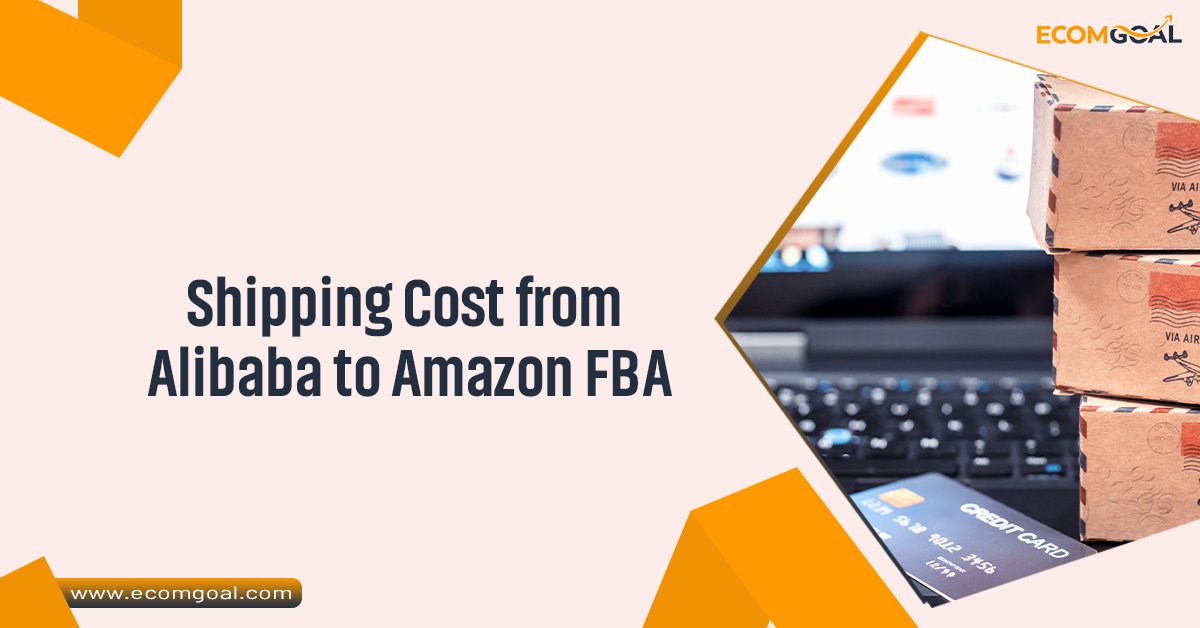
Shipping cost from Alibaba to Amazon FBA (Fulfillment by Amazon) involves multiple steps, and understanding the associated costs is crucial for profitability. In this guide, we will break down the key factors that influence shipping cost from Alibaba to Amazon FBA, explore the various shipping methods, and offer tips to optimize expenses while ensuring smooth logistics.
Factors Affecting Shipping Cost from Alibaba to Amazon FBA
1. Product Dimensions and Weight
The size & weight of your products are primary determinants of shipping costs. Heavier & bulkier items commonly incur higher shipping fees. To minimize costs, consider compact and lightweight products, especially if you’re starting out.
2. Shipping Method
There are three primary shipping methods to transport goods from Alibaba to Amazon FBA:
- Air Freight: Fast but expensive, air freight is suitable for smaller, high-value items or urgent shipments.
- Sea Freight: Cost-effective for large quantities but slower, with transit times ranging from 20 to 40 days.
- Express Shipping: Offered by carriers like DHL, UPS, and FedEx, this method is ideal for small, time-sensitive shipments but can be pricey.
3. Origin and Destination
The distance between the supplier’s location and the Amazon FBA warehouse affects shipping costs. Additionally, international shipments may involve customs clearance and import duties, further increasing expenses.
4. Incoterms
International Commercial Terms (Incoterms) define the responsibilities of buyers & sellers in shipping. Common Incoterms include:
- EXW (Ex Works): The buyer is responsible for all shipping arrangements and costs.
- FOB (Free on Board): The seller handles the shipment to the port of origin; buyer takes over from there.
- DAP (Delivered at Place): The seller delivers the goods to a specified destination, covering most costs.
Selecting the right Incoterm can significantly impact your shipping costs & responsibilities.
5. Customs Duties and Taxes
Import duties, taxes, & fees vary by country and product type. In the U.S., the Harmonized Tariff Schedule (HTS) classifies products and determines applicable duties. Understanding these costs is indispensable to avoid surprises.
Shipping Process from Alibaba to Amazon FBA
Step 1: Product Selection and Supplier Agreement
Identify the products you want to sell and negotiate terms with your Alibaba supplier. Ensure clarity on packaging, labeling, and shipping responsibilities to avoid miscommunication.
Step 2: Choose a Freight Forwarder
Freight forwarders specialize in managing international shipping logistics. They can handle tasks such as customs clearance, documentation, and transportation to Amazon FBA warehouses. Some popular freight forwarders include:
- Flexport
- Freightos
- ShipBob
Working with an experienced freight forwarder simplifies the shipping process and helps ensure compliance with Amazon’s requirements.
Step 3: Packaging and Labeling
Amazon has strict guidelines for packaging and labeling products shipped to FBA warehouses. Work with your supplier to ensure:
- Every units has a scannable barcode (UPC, EAN, or FNSKU).
- Products are securely packaged to prevent harm during transit.
- Cartons meet Amazon’s weight and size requirements.
Step 4: Select the Shipping Method
- Choose a shipping method based on your budget, timeline, and product type:
- For small shipments or quick restocking, opt for express shipping.
- For larger volumes with lower urgency, sea freight is the most economical choice.
- For medium-sized shipments balancing speed and cost, air freight is a viable option.
Step 5: Customs Clearance
Customs clearance is an important step when shipping internationally. Provide accurate documentation, including the commercial invoice, packing list, and Bill of Lading (BOL). Your freight forwarder can assist with this way.
Step 6: Delivery to Amazon FBA
Once the shipment arrives in the destination country, it will be transported to the designated Amazon FBA warehouse. Ensure your shipping plan is created in your Amazon Seller Central account to receive the warehouse address and proper labeling instructions.
Cost Breakdown
Example: Air Freight vs. Sea Freight
Let’s compare shipping 1,000 units of a product weighing 0.5 kg each from China to the U.S.:
- Air Freight:
- Cost per kg: $6
- Total weight: 500 kg
- Shipping cost: $3,000
- Transit time: 7-10 days
- Sea Freight:
- Cost per cubic meter (CBM): $150
- Volume: 3 CBM
- Shipping cost: $450
- Transit time: 25-40 days
While air freight is faster, sea freight is significantly cheaper for larger shipments. Factor in your inventory needs and cash flow to make the right choice.
Hidden Costs
- Warehousing Fees: Amazon charges storage fees based on the size and duration of storage.
- Inspection and Testing: Quality checks before shipping can add to costs but are worth the investment to avoid returns.
- Last-Mile Delivery: Transporting goods from the port to the Amazon FBA warehouse involves additional expenses.
Tips to Reduce Shipping Cost from Alibaba to Amazon FBA
- Consolidate Shipments: Combine smaller orders into larger shipments to benefit from economies of scale.
- Negotiate with Suppliers: Discuss terms like FOB to reduce your logistical responsibilities and costs.
- Use Amazon Partnered Carriers: Amazon’s partnered carriers often offer discounted rates for inbound shipments to FBA.
- Plan Ahead: Avoid expedited shipping by forecasting inventory needs and ordering well in advance.
- Leverage Fulfillment Centers: Ship to the Amazon warehouse closest to your supplier’s port of entry to minimize domestic transit costs.
- Optimize Packaging: Reduce wasted space to lower dimensional weight charges for air freight.
Conclusion
Shipping cost from Alibaba to Amazon FBA involves careful planning & cost management. By understanding the factors that influence shipping costs and choosing the right methods, you can optimize your logistics and maximize profitability. Partnering with reliable freight forwarders, adhering to Amazon’s requirements, and continuously exploring cost-saving strategies will set your e-commerce business up for success.

Hello, I am an E-commerce Expert with extensive experience providing services to numerous e-commerce brands and individuals since 2017. My primary areas of expertise include the Amazon, Walmart, and Shopify marketplaces. Linkedin
